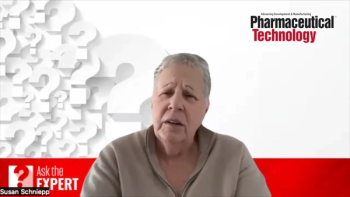
New FDA Guidance Helps Industry Develop Cell-Based Viral Vaccines
The US Food and Drug Administration (FDA) issued a new guidance September 28 to help manufacturers develop safe and effective cell-based viral vaccines.
The US Food and Drug Administration (FDA) issued a new guidance September 28 to help manufacturers develop safe and effective cell-based viral vaccines. FDA's goal is to facilitate the development of vaccines, including those to address emerging and pandemic threats.
Entitled "Characterization and Qualification of Cell Substrates and Other Biological Starting Materials Used in the Production of Viral Vaccines for the Prevention and Treatment of Infectious Diseases," the guidance updates recommendations in the 1993 document, "Points to Consider in the Characterization of Cell Lines Used to Produce Biologics."
The updated guidance provides information for determining the suitability of a cell culture for manufacturing, as well as for testing and validating the safety and purity of the cells used to develop and produce viral vaccines. It also provides information on testing at different production stages, and describes quality-control test methods for cell substrate and adventitious agent issues.
“This is a propitious time for a new guidance,” says Philip Krause, MD, Deputy Director of the Division of Viral Products of the Office of Vaccines.
”There has been an expansion of the kinds of cells manufacturers are considering for use in vaccine manufacture, and there have also been improvements in the technology for testing cells,” he says.
The new document is timely for another reason, too. Demands for influenza vaccine will surely be rising, as flu season approaches; it is easier to scale up cell-based vaccines, than it is egg-based vaccines, if and when surge capacity is needed. Cells, unlike eggs, can be frozen for staroage and then thawed when needed.
Unlike the previous document, according to Krause, the new guidance offers a lot of scientific rationale for recommendations and provides the underlying principles for why they are made. This helps manufacturers think about how to address issues associated with cells used in vaccine manufacture.
Basically, says Krause, it compiles into one place long-standing methods and recommendations about vaccine development. The guidance is available at:
Newsletter
Stay at the forefront of biopharmaceutical innovation—subscribe to BioPharm International for expert insights on drug development, manufacturing, compliance, and more.




